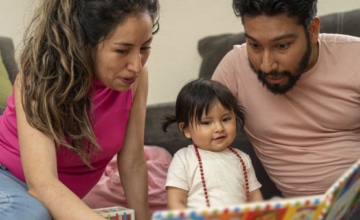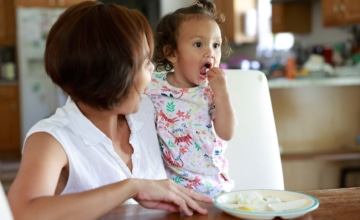While the American Academy of Pediatrics (AAP) does not recommend bed-sharing, the suggestions below provide guidance for increased safety if parents opt to bed-share with their infant. If you choose to have your baby near you when you sleep, you might consider using a co-sleeping attachment on your bed or placing a bassinet right next to your bed. This will allow you to be close and reduce the risk of SIDS.
If you prefer to have your baby in bed with you, consider the following guidelines:
- your mattress should be firm and flat
- your baby should not be able to fall out of the bed or slip between a mattress and wall or headboard
- sheets and blankets should be very light
- your baby should not be kept too warm
- your baby should be on his/her back
Co-sleeping is NOT recommended if the adult in bed smokes, has been drinking, has a cold, is very large, is a heavy sleeper, or has taken medication that might make them sleep deeply. In addition, pets should not be in a bed with a baby. If other children are present in the bed, the parent should sleep between the older children and the baby. Also, couch sleeping should be avoided.
Co-sleeping can be a joyful and loving experience for parents and children alike. The guidelines above can be used to ensure that co-sleeping is done safely and in a way that encourages everyone to have a good night’s sleep.




